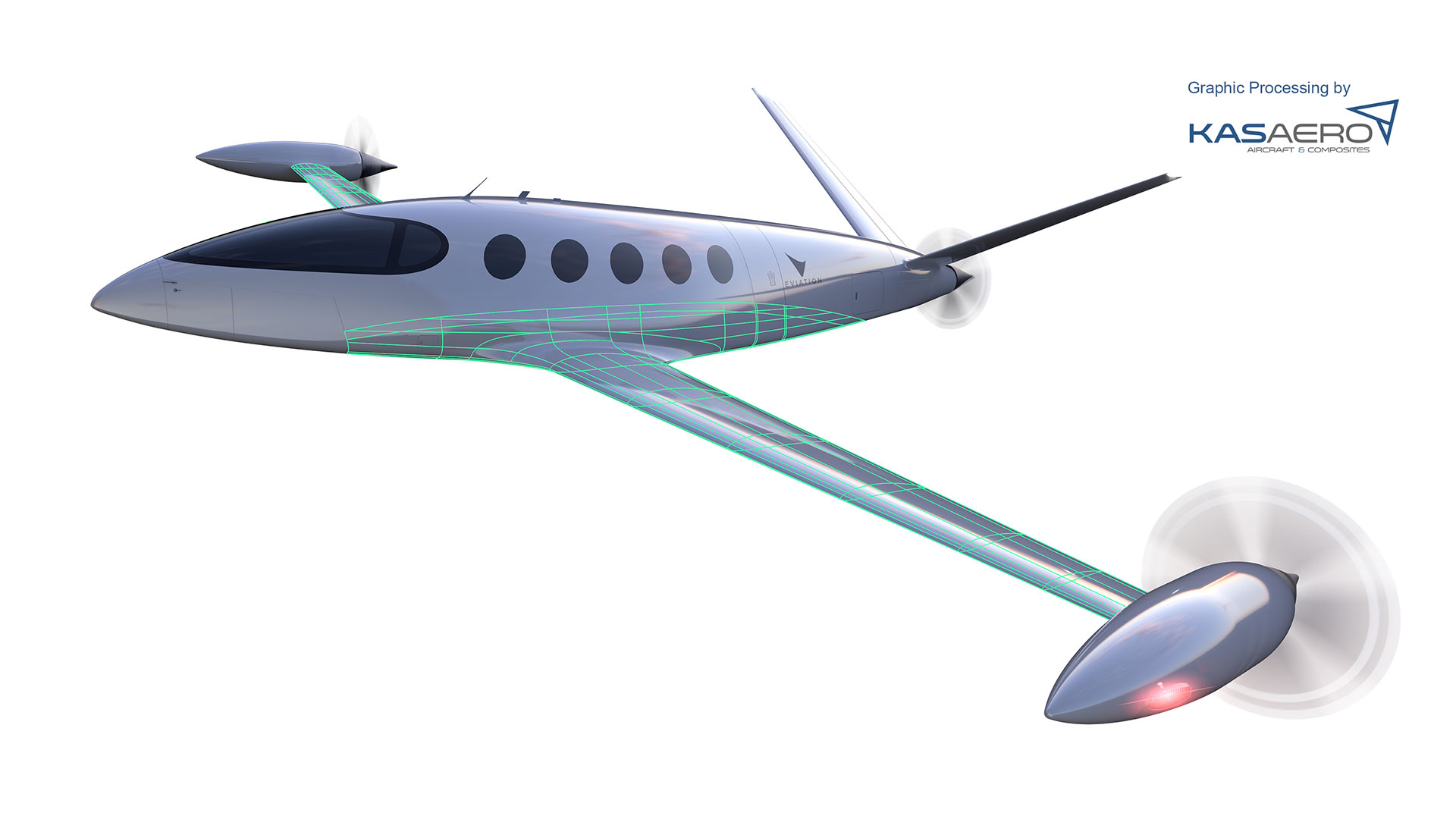Fraunhofer IGCV puts wings on electric aircraft "Alice" in no time at all
For the battery-powered passenger aircraft "Alice", the Israeli company Eviation brought on board experts from the Fraunhofer Institute for Foundry, Composite and Processing Technology IGCV. Together with three other partners from Asia and Germany, the Augsburg research facility developed a lightweight construction solution in just ten months.
The wing is one of the most complex parts of an aircraft. It has to guarantee lift at different speeds and flight attitudes and absorb the resulting transverse forces and bending moments. The required geometries present aircraft manufacturers with major challenges in design and production. For the battery-powered passenger aircraft »Alice«, the Israeli company Eviation therefore brought on board experts from the Fraunhofer Institute for Foundry, Composite and Processing Technology IGCV. Together with three other partners from Asia and Germany, the Augsburg research facility developed a functioning lightweight construction solution. It took only ten months from the idea to the prototype.
»Our focus at the Fraunhofer IGCV is on application-oriented research into intelligent lightweight construction methods and automated manufacturing processes with which high-performance fiber composite structures can be produced cost-efficiently and energy-efficiently,« says Steffen Geinitz, project manager at the Fraunhofer IGCV for the project and head of department in the Online Process Monitoring division. »This know-how made us an optimal partner for the clients and partners from Israel and Singapore – not only for the realization of the prototype, but also with a view to later series production.«
From the idea to the finished wing in ten months: Design and implementation in the »Alice« project
Alice consists of a high percentage of composite materials. CFRP fabric in various grammages (weight per unit area) is used for the wings. One of the challenges in their development: The aircraft design includes pressure propellers with an output of more than 300 HP, which are located at the wing tips and at the tail. This means that additional requirements had to be met for the structural design.
For the project, the Fraunhofer IGCV team bundled expertise from various specialist areas of composite technology: the scientists incorporated their many years of experience in handling CFRP production processes into the development of the Alice wing. The team developed the infusion process and optimized it for more efficient production – all in less than six months. In addition, the Fraunhofer IGCV produced two ailerons for the mock-up and the prototype, which were used to test and validate the process. In total, the scientists needed only ten months to develop the lightweight solution for the wing.
The manufacturing process: VAP infusion process with manual insertion
The load-bearing components of the 16.12 m long wing - 30 mm thick CFRP spars – were manufactured by vacuum infusion (Vacuuum Assisted Process - VAP®) with manual insertion. In contrast to the A350, which is produced by the tape laying process and autoclave curing, the vacuum infusion process is more suitable for the production of small batches or prototypes. In addition, the team considered success with a different infusion process to be critical. The manual process was chosen because automation would have been too time-consuming for the set time frame. Thanks to the VAP® infusion process, air and gas inclusions could be removed reliably and efficiently, resulting in porosity values below 0.3% and fiber volume contents with an accuracy of up to 1%. In addition, the required quality was achieved, which would otherwise only have been possible with an expensive autoclave and tape laying process. The components were manufactured directly on site in the Fraunhofer IGCV workshops and at the project partner in Singapore.
This project was realized in cooperation with:
- Eviation
- Composite Cluster Singapore
- Kasaero
- Admiralty
Last modified:
